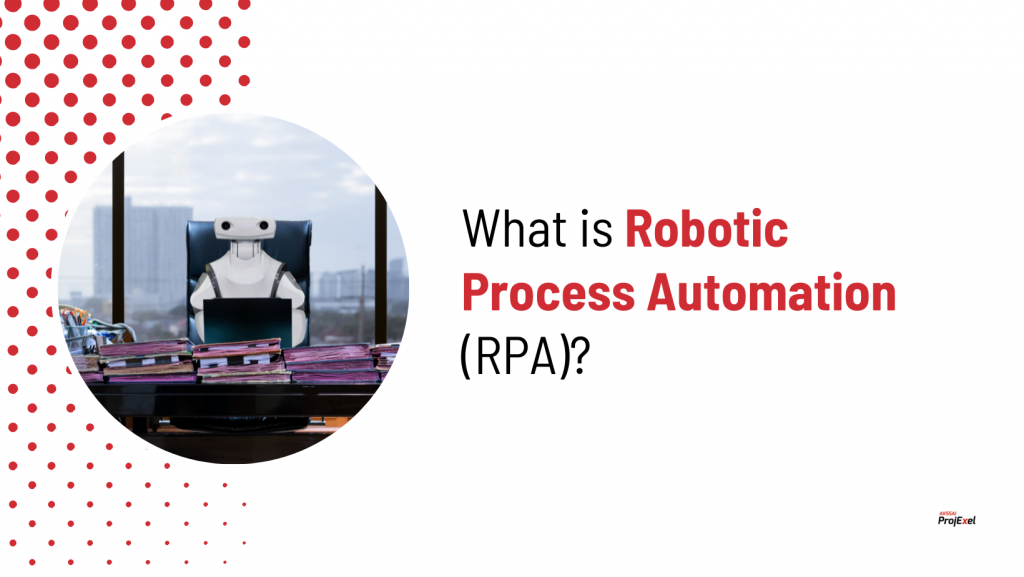Robotic Process Automation is software-based expertise utilizing software program robots to emulate human execution of an enterprise process. This means that it performs the task on a computer, makes use of the identical interface a human employee would, clicks, varieties, opens functions, and makes use of keyboard shortcuts.
software program robots that mimic and combine human actions inside digital techniques to optimize enterprise processes. RPA captures knowledge, runs purposes, triggers responses, and communicates with different techniques to carry out a wide range of tasks – UiPath.
It’s predominantly used to automate enterprise processes and tasks, leading to reductions in spending and giving companies a competitive edge, all considered of that are proving essential in the course of the ongoing international Covid-19 pandemic.
RPA is flexible and versatile enough for use in an enterprise of all sizes, from start-ups to enterprise organizations. Here’s a rundown of the 2 frequent varieties accessible in the market:
Programmable bots – A programmable robotic is outlined by set guidelines and directions. Parameters have to be outlined by programmers before the bot can get to work. Finally, this includes mapping out a process – step-by-step – which will be very time consuming for extra advanced tasks.
Intelligent bots – Bots with artificial intelligence can analyze information – each historic and present – to find out how staff carries out a process. The robotic will comply with your clicks, mouse movements, and actions.
After a time frame when sufficient data has been analyzed, the bot can have sufficient information to finish the process itself.
Intelligent and self-learning bots are higher suited to carry out processes involving unstructured knowledge and processes that contain fluctuating parameters.
How does RPA work?
Automation expertise has been a staple of enterprise for the last decade, however in recent times, RPA expertise has reached a formidable stage of sophistication whereas retaining ease-of-use and its advantages have taken a stronger significance in the course of the Covid-19 pandemic.
It’s not a tool that’s solely used to facilitate the automation of easy and repetitive IT tasks. RPA is maturing, and with the convergence of different applied sciences – corresponding to synthetic intelligence and machine learning (ML) – we’re starting to discover new prospects.
The potential for the advantages of RPA is appreciable – however, the threat is that with any new expertise, it won’t be completely understood, and tasks won’t make the very best use of the approach.
In contrast to different types of automation, RPA has the intelligence to resolve if a process should happen.
It could actually analyze knowledge introduced to it and decide primarily based on the logic parameters set in place by the developer. Compared to different types of automation, it doesn’t require system integration.
RPA is a broad discipline and there is a wide array of technologies available in the market that enormously differ from each other. Nonetheless, most RPA merchandise will comprise of RPA developer tools, a controller and the robotic itself.
Companies can leverage RPA in a multitude of various methods. Flexible and simple to implement, some companies could discover that they use it in a method that’s distinctive to their group.
Figuring out what processes needs to be automated is a key strategic level. There is no level in automating a process only for the sake of it.
Top 3 advantages of Robotic Process Automation
1. Automatable work
One of many predominant attracts of RPA is that it allows automatable work – relieving human employees from repetitive clerical processes corresponding to knowledge entry and information manipulation, permitting human staff to give attention to advanced value-adding tasks that elevate an enterprise.
2. Reduction in human error and costs
Foibles to which human employees are susceptible –notably throughout lengthy repetitive tasks – brought on by tiredness and boredom are fully mitigated with RPA. This leads to work that’s more correct, well-timed, and constant, guaranteeing that money and time aren’t lost correcting previous work or creating duplicates.
3. It really works on the present IT infrastructure and is non-invasive
RPA works alongside current IT infrastructure; it simply must be trained to find out how to use it. It is the main benefit for organizations utilizing legacy techniques. It interfaces with front-end infrastructure and makes use of the identical graphic user interface (GUI) that human employees would use to finish a job, making certain that the IT landscape doesn’t need to be modified to accommodate RPA – protecting costs to a minimum.
What will the future of RPA look like?
An increasing number of corporations are planning to implement RPA going into 2020. Because it turns into extra widespread, the uses for it can grow to be more varied. We’re already seeing indicators that RPA is getting used beyond information input.
It may be used for different time-consuming processes corresponding to e-mail recognition and file conversion. It’s going to incorporate machine studying and cognitive algorithms to use more and more correct judgment and discover ways to carry out processes at a quicker price.

